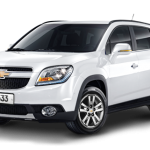- 자동차 타이어 측면에 적혀있는 숫자들의 의미는 위와 같으며, 아래 그림의 예를 들어 보겠습니다.
- 2016 임팔라에 장착되어 있는 타이어입니다.
- P : 승용차를 의미합니다.
- 사이즈 245 : 타이어 폭을 의미합니다. (그림의 수치상으로 폭은 245mm 입니다.)
- 그 다음 숫자 45 : 타이어측면의 높이를 폭의 비율로 환산한 값입니다. (타이어 폭 245mm의 45% = 110.25mm)
- R19 : 타이어 크기가 19인치 타이어를 의미합니다.
- 98 (2개 또는 3개의 숫자로 구성) : 타이어가 얼마나 무거운 무게를 버틸 수 있는지를 의미합니다. (98V는 환산하면 1,650 파운드까지 버틸 수 있다는 의미입니다. – 아래 표 참조)
- V (스피드 치수 – 1개 또는 2개의 숫자/알파벳으로 구성됨) : 타이어가 낼 수 있는 최고 속도를 의미합니다.(아래 표 참조)
- 타이어 트레드 등급 : 숫자가 높을수록 더 좋은 타이어입니다.
- 구동력 : AA가 최고 등급이며 C가 최하 등급을 의미합니다.
- 온도 : A가 최고 좋은 등급이며 C가 최하 등급을 의미합니다.
- DOT 코드 : 앞의 2자리는 생산공장을 의미하며, 맨 뒤의 숫자 4자리는 생산년도 및 주차를 의미합니다. 예를 들어 0916은 2016년도 9주차에 생산된 타이어를 의미합니다.
- ALL TIRES HAVE sidewall markings that tell you things like how big they are and how much weight they can carry.
- P : Means typical car. Not truck and bus.
- Size : On the example tire, 245 is the cross-section width in millimeters;
- 40 is the ratio of sidewall height to its width (45 percent);
- R indicates radial- ply construction; and 18 is the wheel rim’s diameter in inches.
- Load index : Shorthand for the weight each tire can carry safely. 98V load index translates to 1,650 pounds per tire, typical for this popular car tire. When replacing tires, make sure to match or increase the original rating. It’s consist of 2- or 3-digit number.
- Speed rating : A letter next to the load index denotes the tire’s maximum speed when carrying the load defined by the load index. UHP tires are rated ZR (149+ mph), W (168 mph), and Y (186 mph). Regular all-seasons are usually rated S (112 mph) or T (118 mph). It’s consist of 1- or 2-digit/letter combination.
Climbing up the scale are H (130 mph) and V (149 mph), and winter/snow tires may carry the letter Q (99 mph) or higher. - Treadwear grade. This number is an index to compare treadwear between tires.
A grade of 300 denotes a tire that will wear three times better than a tire graded 100.But there’s no direct correlation between the grades and a specific mileage. - Traction and temperature grades. They denote a tire’s wet-stopping ability and temperature resistance. For traction, AA is best, C is worst. For temperature resistance, grades range from A (best) to C.
- DOT code. On the tire below, M6 refers to the plant code, and 0916 refers to the week and year the tire was made. The numbers are used to identify the tire in the event of a recall.
- 그 외의 적힌 의미들 (Additional Marks)
- M+S, or M&S: Mud and Snow; A tire that meets the Rubber Manufacturers Association (RMA) and Rubber Association of Canada (RAC) all-season tire definition. These are commonly found on all-season tires, with self-cleaning tread and average traction in muddy or very snowy conditions, and for low temperatures. Spike tires have an additional letter, “E” (M+SE).
- M+T, or M&T: Mud and Terrain; Designed to perform in mud or on other terrain that requires additional traction such as on rocks, in deeper snow, and in loose gravel.
- Mountain Snowflake Pictograph: Winter passenger and light truck tires that meet the severe snow service requirements of Rubber Manufacturers Association (RMA) and Rubber Association of Canada (RAC).
- BSW: Black SideWall
- WSW: White SideWall
- OWL: Outline White Lettering
- ORWL: Outlined Raised White Lettering
- RWL: Raised White Lettering
- VSB: Vertical Serrated Band
- BSL: Black Serrated Letters
- E4: Tire approved according ECE-regulations, the number indicating the country of approval.
- 030908: Approval number of the tire
- DOT code: All tires for use in the USA have the DOT code, as required by the Department of Transportation (DOT). It specifies the company, factory, mold, batch, and date of production (two digits for week of the year plus two digits for year; or two digits for week of the year plus one digit for year for tires made prior to 2000). Although not law, some tire manufacturers do not Tire manufactured in 10th week of 2001 suggest using a “new” tire that has been sitting on the shelf for more than six years (Ford Motor Company) or 10 years (Cooper Tire citing a tire association recommendation). JATMA, the Japanese Automotive Tyre Manufacturers Association recommends that all tires be inspected at five years, and all tires that were manufactured more than ten years previous be replaced.
- TL: Tubeless
- TT: Tube-type, tire must be used with an inner-tube
- Made in …: Country of production
- C: Commercial; tires for light trucks (Example: 185 R14 C)
- B: Bias belted; tires for motorcycles (Example: 150/70 B 17 69 H)—diagonal construction with belt added under the tread
- SFI, or Inner: Side Facing Inwards; inside of asymmetric tires
- SFO, or Outer: Side Facing Outwards; outside of asymmetric tires
- TWI: Tread Wear Indicator; a device, such as a triangle or a small Michelin Man icon, located where the tread meets the sidewall. It indicates the location of the raised wear bars in between the tire tread channels.
- LL: Light Load; tires for light usage and loads
- SL: Standard Load; tire for normal usage and loads
- XL: eXtra Load; a tire that allows a higher inflation pressure than a Standard Load tire, which increases the tire’s maximum load
- RF: Reinforced—for Euro-metric tires, the term ‘reinforced’ means the same thing as ‘Extra Load'[18]
- RFT: Run-Flat Tire; Tires designed for vehicles without spare tires. Reinforced sidewalls allow the tire to be driven “flat” for a distance specified by the manufacturer (usually 50 miles).
- ZP: Zero-Pressure; Michelin’s branding for their run-flat lines.
Arrows: Some tread designs are “directional”, and designed to perform better when driven in a specific direction. Such tires will have an arrow showing which way the tire should rotate when the vehicle is moving forwards. - MO: Original tires for Mercedes-Benz
- MOE: Mercedes-Benz Original Extended
- N-x: Original tires for Porsche where “x” is a “0” for the first approved in that size, “1” the second, …
- Star: Original tires for BMW
- RSC in a Circle: BMW Runflat System Component
- TPC: General Motors OE Fitments
- AMx: Aston Martin OE Fitments
- “100T”: Commonly appears after tire size. Meaning: Standard Load Inflation Table (100) & Speed Rating (T)
- “J”: Jaguar Original Manufacturer fitment
- Speed Rating
| Code | mph | km/h | Code | mph | km/h | |
|---|---|---|---|---|---|---|
| A1 | 3 | 5 | L | 75 | 120 | |
| A2 | 6 | 10 | M | 81 | 130 | |
| A3 | 9 | 15 | N | 87 | 140 | |
| A4 | 12 | 20 | P | 94 | 150 | |
| A5 | 16 | 25 | Q | 100 | 160 | |
| A6 | 19 | 30 | R | 106 | 170 | |
| A7 | 22 | 35 | S | 112 | 180 | |
| A8 | 25 | 40 | T | 118 | 190 | |
| B | 31 | 50 | U | 124 | 200 | |
| C | 37 | 60 | H | 130 | 210 | |
| D | 40 | 65 | V | 149 | 240 | |
| E | 43 | 70 | Z | over 149 | over 240 | |
| F | 50 | 80 | W | 168 | 270 | |
| G | 56 | 90 | (W) | over 168 | over 270 | |
| J | 62 | 100 | Y | 186 | 300 | |
| K | 68 | 110 | (Y) | over 186 | over 300 |
- Tire Load index chart
| Code | Weight | Code | Weight | Code | Weight | Code | Weight | |||
|---|---|---|---|---|---|---|---|---|---|---|
| 60 | 250 kg (550 lb) | 80 | 450 kg (990 lb) | 100 | 800 kg (1,800 lb) | 120 | 1,400 kg (3,100 lb) | |||
| 61 | 257 kg (567 lb) | 81 | 462 kg (1,019 lb) | 101 | 825 kg (1,819 lb) | 121 | 1,450 kg (3,200 lb) | |||
| 62 | 265 kg (584 lb) | 82 | 475 kg (1,047 lb) | 102 | 850 kg (1,870 lb) | 122 | 1,500 kg (3,300 lb) | |||
| 63 | 272 kg (600 lb) | 83 | 487 kg (1,074 lb) | 103 | 875 kg (1,929 lb) | 123 | 1,550 kg (3,420 lb) | |||
| 64 | 280 kg (620 lb) | 84 | 500 kg (1,100 lb) | 104 | 900 kg (2,000 lb) | 124 | 1,600 kg (3,500 lb) | |||
| 65 | 290 kg (640 lb) | 85 | 515 kg (1,135 lb) | 105 | 925 kg (2,039 lb) | 125 | 1,650 kg (3,640 lb) | |||
| 66 | 300 kg (660 lb) | 86 | 530 kg (1,170 lb) | 106 | 950 kg (2,090 lb) | 126 | 1,650 kg (3,638 lb) | |||
| 67 | 307 kg (677 lb) | 87 | 545 kg (1,202 lb) | 107 | 975 kg (2,150 lb) | 127 | 1,750 kg (3,858 lb) | |||
| 68 | 315 kg (694 lb) | 88 | 560 kg (1,230 lb) | 108 | 1,000 kg (2,200 lb) | 128 | 1,800 kg (3,968 lb) | |||
| 69 | 325 kg (717 lb) | 89 | 580 kg (1,280 lb) | 109 | 1,030 kg (2,270 lb) | 129 | 1,850 kg (4,079 lb) | |||
| 70 | 335 kg (739 lb) | 90 | 600 kg (1,300 lb) | 110 | 1,060 kg (2,340 lb) | 130 | 1,900 kg (4,189 lb) | |||
| 71 | 345 kg (761 lb) | 91 | 615 kg (1,356 lb) | 111 | 1,090 kg (2,400 lb) | 131 | 1,950 kg (4,289 lb) | |||
| 72 | 355 kg (783 lb) | 92 | 630 kg (1,390 lb) | 112 | 1,120 kg (2,470 lb) | 132 | 2,000 kg (4,409 lb) | |||
| 73 | 365 kg (805 lb) | 93 | 650 kg (1,430 lb) | 113 | 1,150 kg (2,540 lb) | 133 | 2,065 kg (4,541 lb) | |||
| 74 | 375 kg (827 lb) | 94 | 670 kg (1,480 lb) | 114 | 1,180 kg (2,600 lb) | 134 | 2,125 kg (4,674 lb) | |||
| 75 | 387 kg (853 lb) | 95 | 690 kg (1,520 lb) | 115 | 1,215 kg (2,679 lb) | 135 | 2,185 kg (4,806 lb) | |||
| 76 | 400 kg (880 lb) | 96 | 710 kg (1,570 lb) | 116 | 1,250 kg (2,760 lb) | 136 | 2,245 kg (4,938 lb) | |||
| 77 | 412 kg (908 lb) | 97 | 730 kg (1,610 lb) | 117 | 1,285 kg (2,833 lb) | 137 | 2,305 kg (5,071 lb) | |||
| 78 | 425 kg (937 lb) | 98 | 750 kg (1,650 lb) | 118 | 1,320 kg (2,910 lb) | 138 | 2,365 kg (5,203 lb) | |||
| 79 | 437 kg (963 lb) | 99 | 775 kg (1,709 lb) | 119 | 1,360 kg (3,000 lb) | 139 | 2,435 kg (5,357 lb) |








